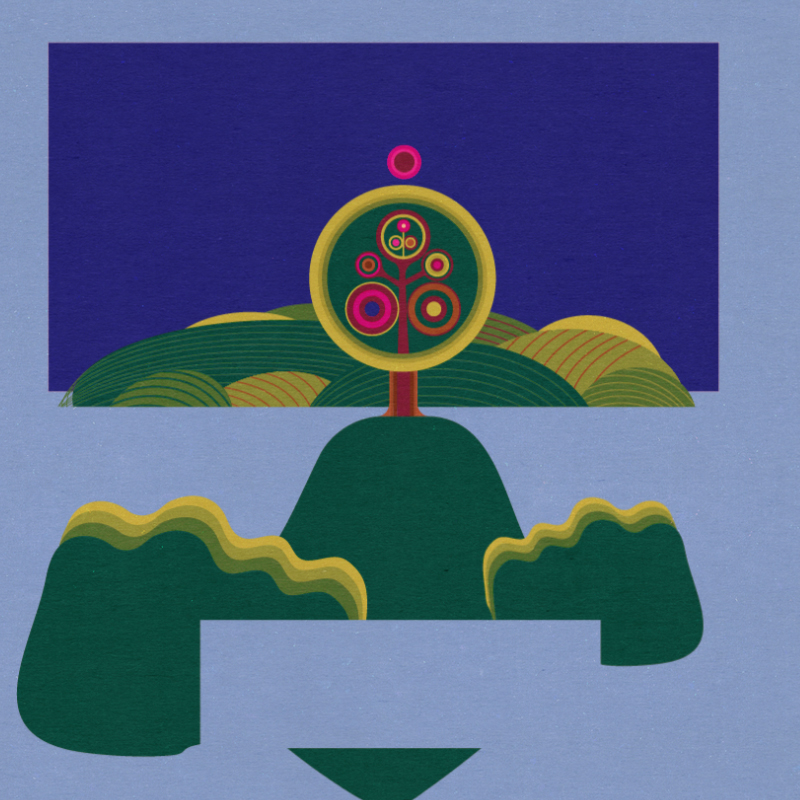Ladakalnis – a Magical Hill
> BACK TO 100 STORIESLadakalnis is a magical hill surrounded by forests and lakes. This place would be perfect for a film about paranormal phenomena: aliens, secrets of nature, encounters with forest spirits. Different winds blow around the hill, the air is very warm in some places and always cold in the others. Sacrificial rituals for the great Mother Goddess were performed on Ladakalnis in ancient times.
Ladakalnis is located in Ignalina district and it is 176 m high. It’s possible to see six lakes from the top of the hill: Ūkoja, Linkmenas, Pakas, Asėkas, Alksnaitis and Alksna. The hill belongs to the oldest Aukštaitija National Park in Lithuania, which was founded in 1974. National parks preserve special landscapes, rare natural objects and animals that cannot be found anywhere else. Aukštaitija National Park is exceptional for its lakes – there are twenty-six of them in the park. The lakes are of different sizes, so it is said that the large lakes have “children” – these are the adjacent lakes: Lūšykštis is near Lūšis, Asalnykštis – near Asalnai, Utenykštis – near Utenas, Ažvintaitis – near Ažvintis, and Baluošykštis is next to Baluošas.
Lakes inspired deep respect and fear in ancient Lithuanians. The Pagans believed that gods, which could both help and harm people, lived in some natural objects. Waters had long been associated with the Devil: it was believed that he lived under water – at the bottom of lakes, ponds, and swamps. The devil would sometimes tell people about a lake flying by in the shape of a cloud, which would land on the ground if someone guessed its name.
It’s not known whether the pagan devil has anything to do with the strange natural phenomena around the lakes, hills and forest areas of the national park. It could only be explained by the scientists. Winds of different strengths blow there, some areas of the park are heated by the sun, and others always remain cool. For example, the southern slope, which is 15–20 degrees steep, gets as warm as the Danube plains in southern Europe. It is also warmer on pine-covered slopes and ravines. In some parts of the forest, the night time temperature can drop by 8–10 degrees.
This mystical atmosphere made Ladakalnis a place of worship in ancient times – offerings for the goddess Lada were held on the top of the hill. Lada was the great Mother Goddess, the patron of fertility and marriage. Rituals of her worship took place in spring and summer, during the full blooming of nature. Motiejus Strijkovskis, a historian and poet of the sixteenth century, wrote that in honour of Lada the springs were decorated with tree branches and flowers, and medical herbs were collected on Saint John's Eve. Motiejus Valančius, the Samogitian bishop and historian of the nineteenth century, said that the Samogitians celebrated the day of the goddess Lada on the first Wednesday after Easter. This holiday was special because no work was permitted on that day: people rested as they feared that otherwise their crops would be destroyed by thunderstorms and hail – frozen rain. Instead, songs and hymns were sung to Lada, which featured the words “lado”, “ladum”, and “leliumai” in the chorus.

